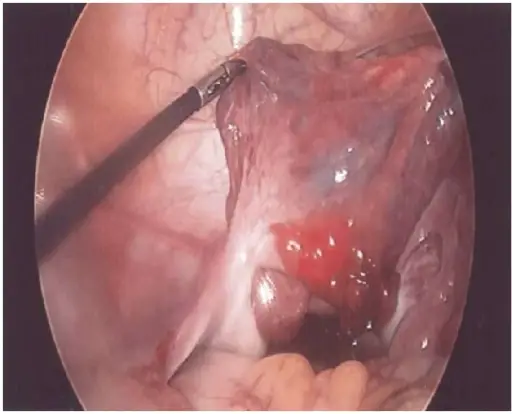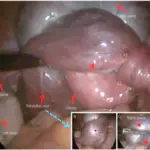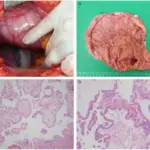Hydatids of Morgagni are benign, pedunculated, cystic structures arising from müllerian vestiges below the fallopian tube near the fimbria.
What is the Pathology of Hydatids of Morgagni?
The pathology of hydatids of morgagni is:
-Etiology: The cause of hydatids of morgagni is embryonal remnants of the müllerian duct.
-Genes involved: RET, CCDC6, TAS2R38, PTCH1, F9.
-Pathogenesis: The sequence of events that lead to hydatids of morgagni.
-Morphology: The morphology associated with hydatids of morgagni shows appendiceal mucocel, mucinous mass.
-Histology: The histology associated with hydatids of morgagni shows embryonal remnants.
How does Hydatids of Morgagni Present?
Patients with hydatids of Morgagni typically females of all age groups. The symptoms, features, and clinical findings associated with hydatids of Morgagni include: abdominal pain, a palpable abdominal mass, nausea/vomiting, fevers, or leukocytosis.
How is Hydatids of Morgagni Diagnosed?
Hydatids of Morgagni is diagnosed by diagnostic laparoscopy, and CT scan.
How is Hydatids of Morgagni Treated?
Hydatids of Morgagni is treated by laparoscopic removal, and surgical excision.
What is the Prognosis of Hydatids of Morgagni?
The prognosis of hydatids of Morgagni is good. They are generally related with unexplained infertility. The removal of hydatid cysts of Morgangi leads to a higher rate of spontaneous pregnancy.



